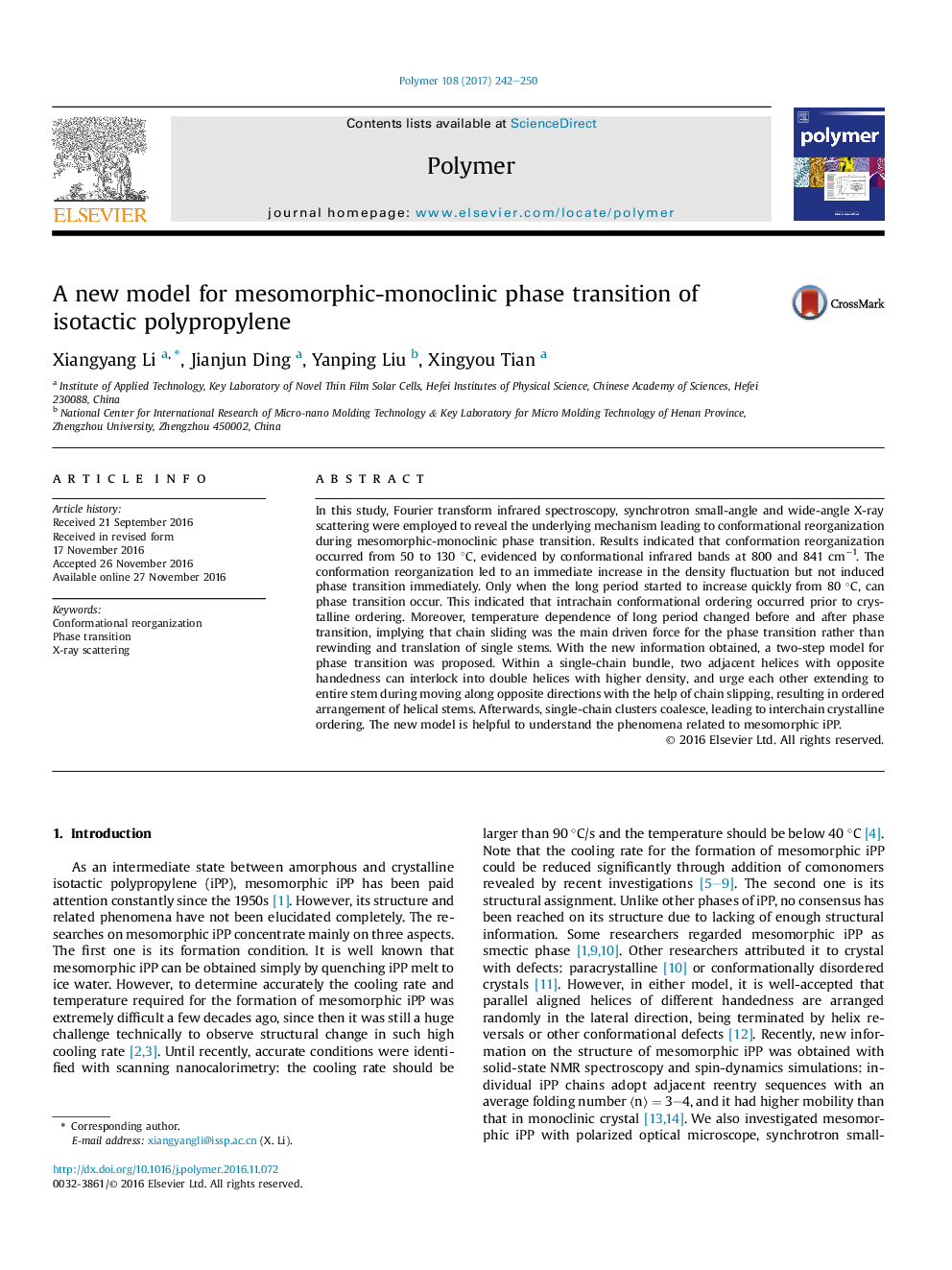| Article ID | Journal | Published Year | Pages | File Type |
|---|---|---|---|---|
| 5178500 | Polymer | 2017 | 9 Pages |
â¢Two infrared characteristic bands for conformational reorganization during phase transition were identified.â¢SAXS measurements indicated temperature dependence of long period changed before and after phase transition.â¢Based on new findings, a new model for phase separation was proposed.
In this study, Fourier transform infrared spectroscopy, synchrotron small-angle and wide-angle X-ray scattering were employed to reveal the underlying mechanism leading to conformational reorganization during mesomorphic-monoclinic phase transition. Results indicated that conformation reorganization occurred from 50 to 130 °C, evidenced by conformational infrared bands at 800 and 841 cmâ1. The conformation reorganization led to an immediate increase in the density fluctuation but not induced phase transition immediately. Only when the long period started to increase quickly from 80 °C, can phase transition occur. This indicated that intrachain conformational ordering occurred prior to crystalline ordering. Moreover, temperature dependence of long period changed before and after phase transition, implying that chain sliding was the main driven force for the phase transition rather than rewinding and translation of single stems. With the new information obtained, a two-step model for phase transition was proposed. Within a single-chain bundle, two adjacent helices with opposite handedness can interlock into double helices with higher density, and urge each other extending to entire stem during moving along opposite directions with the help of chain slipping, resulting in ordered arrangement of helical stems. Afterwards, single-chain clusters coalesce, leading to interchain crystalline ordering. The new model is helpful to understand the phenomena related to mesomorphic iPP.
Graphical abstractDownload high-res image (370KB)Download full-size image
